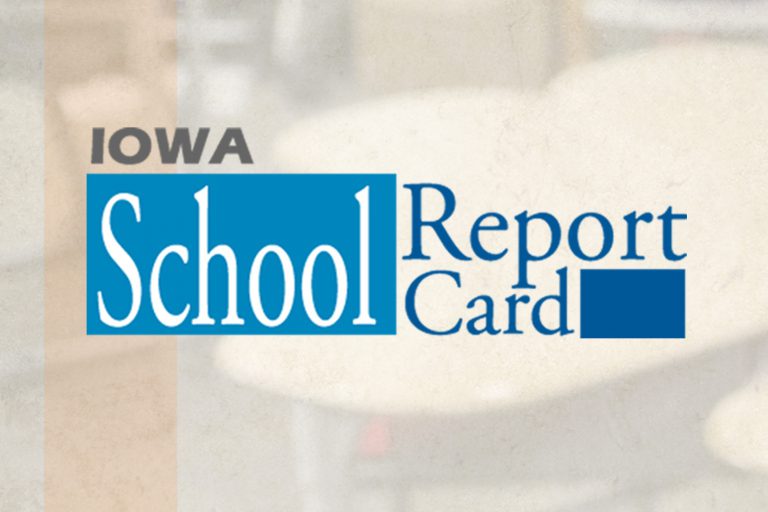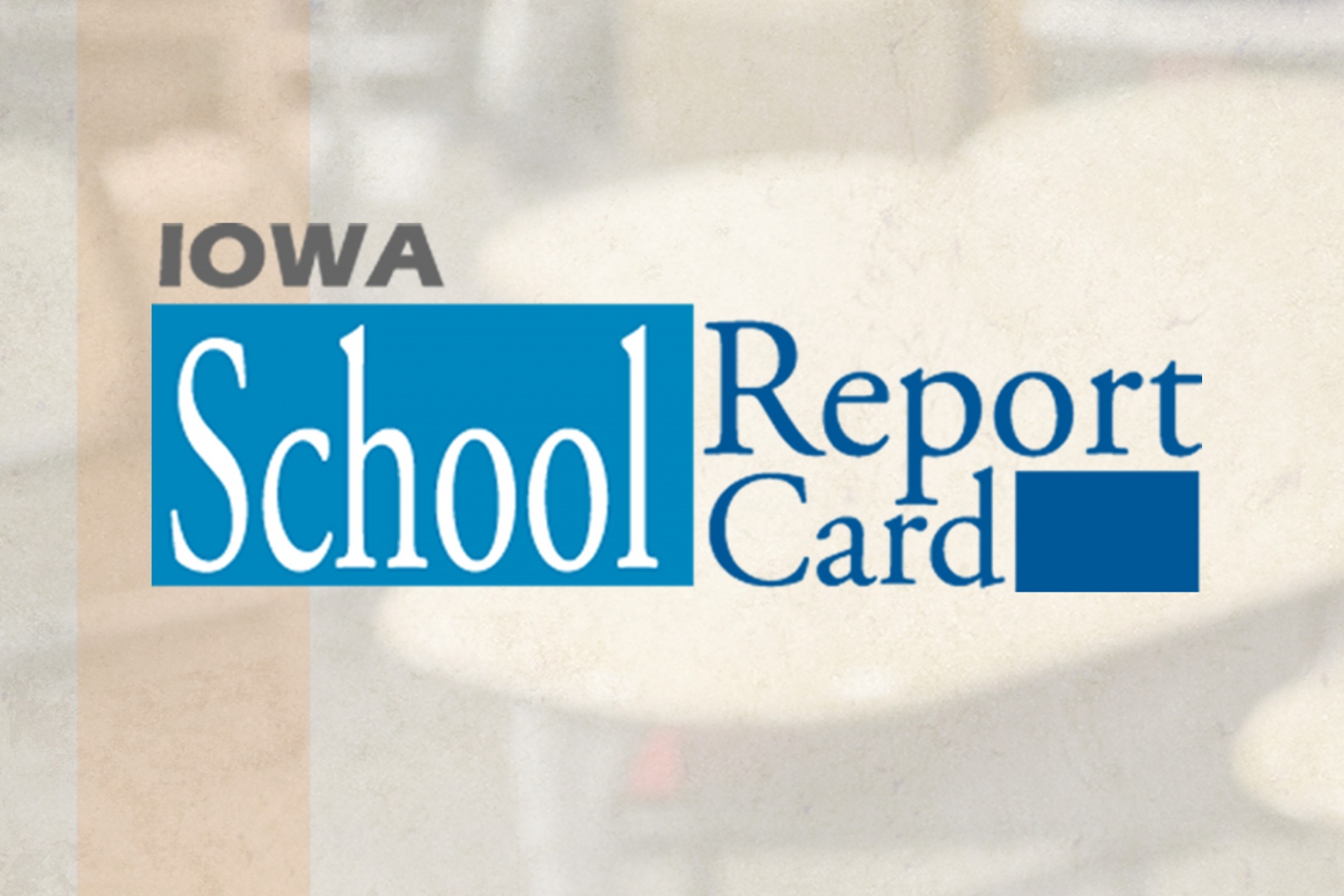

Iowa School Report Card 2017

The Iowa Department of Education released the annual Iowa School Report Card, the state’s web-based school ratings system, on December 13, 2017. The Iowa School Report Card, which was launched in 2015 as part of a state legislative requirement, rates individual public schools on measures of student achievement, as well as other factors. They include student proficiency rates in math and reading combined, student academic growth, narrowing achievement gaps among students, college and career readiness, student attendance, graduation rates, parent involvement, and staff retention. Based on each school’s performance over a two-year period, the report card assigns one of six ratings: Exceptional, High-Performing, Commendable, Acceptable, Needs Improvement, and Priority.
Celebrations:
The Iowa School Report Card bases the majority of its measures on the Iowa Assessment results. As a result, it showed an overall decline in proficiency rates across the state. In Ames, however, all 7 schools (high school, middle school, 5 elementary schools) show student proficiency rates above the state average. The overall rankings for 6 schools in Ames are within the “Commendable,” while Fellows Elementary garnered a “High-Performing” ranking.
A point of pride for Ames High School is the College and Career Readiness mark of 70.2%. The state average in that category is 39.5%, clearly showing Ames High students preparedness toward the next step in their lives.
Achievement Gap:
The Report Card also reinforced the District’s achievement gap among African-American students. Last year’s Iowa Assessment results, which make up the majority of the Iowa School Report analysis, was reviewed last spring by the District School Improvement Advisory Committee (SIAC), which is comprised of parents, teachers, students, administrators, and community representatives. SIAC recommended that each school and the District add a goal to address this achievement gap. This has prompted professional development opportunities and building level goals among all buildings.
Superintendent Dr. Tim Taylor said, “What we do know at this time is that we dropped in our subgroup categories in many of our schools. We are very disappointed in these declines. However, it’s important to keep in mind that these declines are based on last year’s Iowa Assessment results, which were reviewed by the School Improvement Advisory Committee and resulted in the recommendation of goals to better address the needs of our African-American students. The goals were written months after the Iowa Assessments were taken, so the Iowa School Report Card does not reflect any of our recent efforts to increase cultural proficiency.”
Takeaways from the Iowa School Report Card:
The Iowa School Report Card is a challenging set of data to navigate. One of the positives is that it allows us, as a District and community, to continue the dialog about how we reach all students. In this case, it has reinforced an achievement gap that we already knew about. That work and conversation will continue across the District, in our school board room, and in the classroom until all of our students are proficient.
But the Iowa School Report Card also takes data and paints broad strokes about schools. Schools are slotted into categories based on statistical T-scores, which are different than percentages, and then the schools are compared against all others across the state, not just those who with similar demographics. Because much of the Report Card is based on Iowa Assessments, it is a brief snapshot of student achievement. Of the total Report Card, Iowa Assessment results comprise 80% of the data points for high schools, and 85% for middle school and elementary schools.
In conclusion…
Building principals and District administrators have begun to review each building’s data. This includes comparing last year’s scores to this year’s in each category to understand how any changes need to be addressed or celebrated. We also compare each school’s scores to state averages to see if there are common trends.
Of course we want our students to perform well on the Iowa Assessments, and we want that to be reflected in the Iowa School Report Card. We want to see the data that indicates that they are doing well, but we also recognize that it is a general knowledge assessment that could never adequately reflect all of the learning that our students experience in the classroom and beyond. Our focus has always been on the state-mandated, board-approved Iowa Core curriculum standards. Classroom assessments are based on the Iowa Core, and that is how we best measure our students’ progress. As a result, we will use the data in the Iowa School Report Card, as well as many other data sets, to take steps to meet the needs of each and every student.